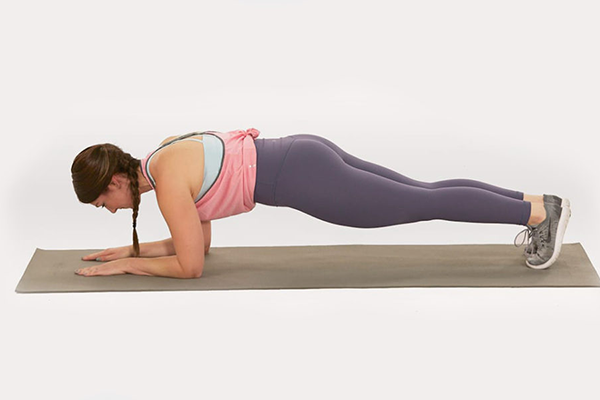Planks 101: Plank Exercises for Beginners
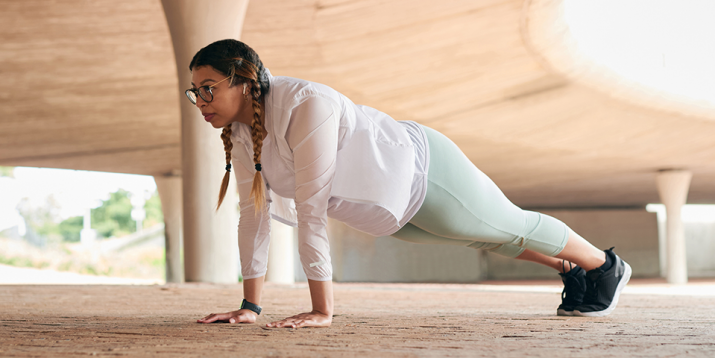
Sometimes the best exercises are the simplest — especially if you’re a beginner. The plank exercise will help you build strength and with that, some serious body confidence.
And it’s all achievable from the comfort of your own home. Read on to learn how to incorporate this full-body exercise into your workout routine.
How to Do a Plank for Beginners
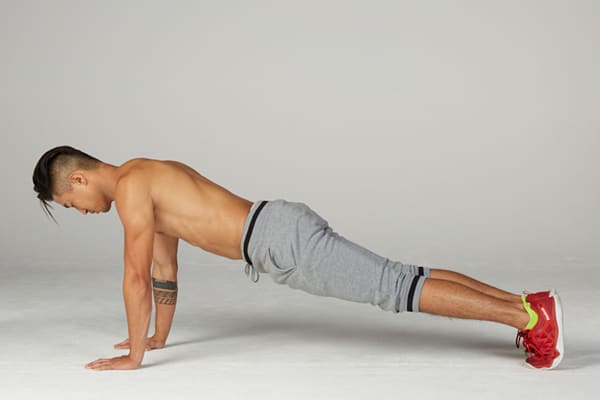
Alignment is key, friends. Use a mirror or a piece of furniture as you get started to avoid accidental pressure on your joints.
If you choose to use a piece of furniture, perform the following steps at an incline to engage your abs. You may also do a plank on the floor or a mat.
- Place your hands directly under your shoulders. Spread your fingers wide.
- Press through your shoulders and dome your upper back to protect your shoulder sockets and strengthen your chest muscles (pectoralis major/minor).
- Micro-bend your elbows to shield your joints against unnecessary pressure.
- Lengthen your spine behind you and lift your knees off the floor (you can leave your knees down).
- Parallel your legs to the ceiling and engage your thighs.
- Tuck your hip bones forward toward your belly button to increase your abdominal and glute engagement.
- Stack your heels over the ball-mounts of your feet to avoid strain on your toe joints.
- Gaze downward to lengthen your neck and keep your spine aligned.
Benefits of Planks
Incorporating planks into your routine will help you build more than just rock-solid abs.
“The plank is not just an ab exercise, it’s a full-body exercise,” says Heather Milton, M.S., C.S.C.S., a board-certified clinical exercise physiologist at NYU Langone’s Sports Performance Center.
Build core strength
Planks forge strength and stability in every inch of your core by targeting not only the rectus abdominis (six-pack ab muscles) but also the internal and external obliques, transverse abdominis, and erector spinae muscles.
Strengthen secondary muscles
Planks also tone your shoulders, back (including your butt), and legs.
Promote stability for the rest of your workouts
With stronger core muscles, your other exercise routines will benefit. Running, yoga, and weightlifting (seriously the list is endless) will feel like a breeze.
How Many Planks Should You Start With?
You have the luxury of being able to do a plank anytime or any place. With limitless opportunities to exercise like this, you may start to question how much is enough to gain the desired result?
Give yourself a reasonable goal to build up to. Building to a 60-second plank is enough to have you shaking like an earthquake.
“You can do planks every day of the week,” Milton says. “They’re not highly stressful.”
When you can plank every day, why not try the 30-day plank challenge?
There are different variations of the 30-day plank challenge, but the general idea is to perform the plank exercise every day for 30 days, making sure to add time and intensity as your core gets stronger.
Plank Variations for Beginners
Once you’re able to hold the basic plank with impeccable form for a full minute, Milton suggests tweaking the move to boost the intensity.
There is a variety of plank options out there, and many of them are excellent for novices. You’ve learned to do a basic plank, now keep progressing!
1. Forearm plank
From basic plank, drop down to your elbows. Align your elbows under your shoulders. You can interlace your fingers or make a number eleven with your forearms. Keep your hips and legs the same as a basic plank.
2. Forearm plank rock forward and back
From a forearm plank position, you can feel a deeper burn when you rock forward and backward from the balls of your feet. Gently push your body within a one-inch range to increase the challenge.
3. High plank mountain climbers
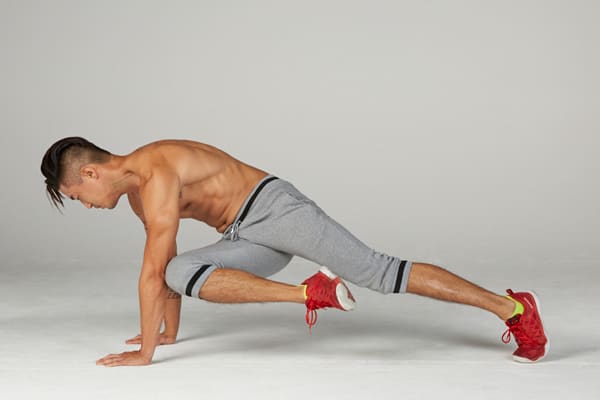
Take the basic plank with your shoulders stacked over your wrists, and draw one knee in toward your chest, step it back, and then repeat with the other leg.
Do this at a slow or a fast pace. When you move quickly, you will also increase your heart rate.
4. Side plank
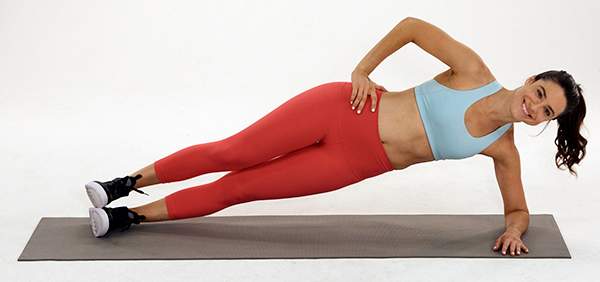
To enter into a side plank from a basic or forearm plank, ground down through your left hand or left forearm and open your body to the right side of the room.
Engage your hips to work your obliques. Once your entire body is facing rightward, you can optionally raise your right arm to the ceiling and/or drop your bottom knee for more stability.
After three breaths, switch sides to keep things even.

